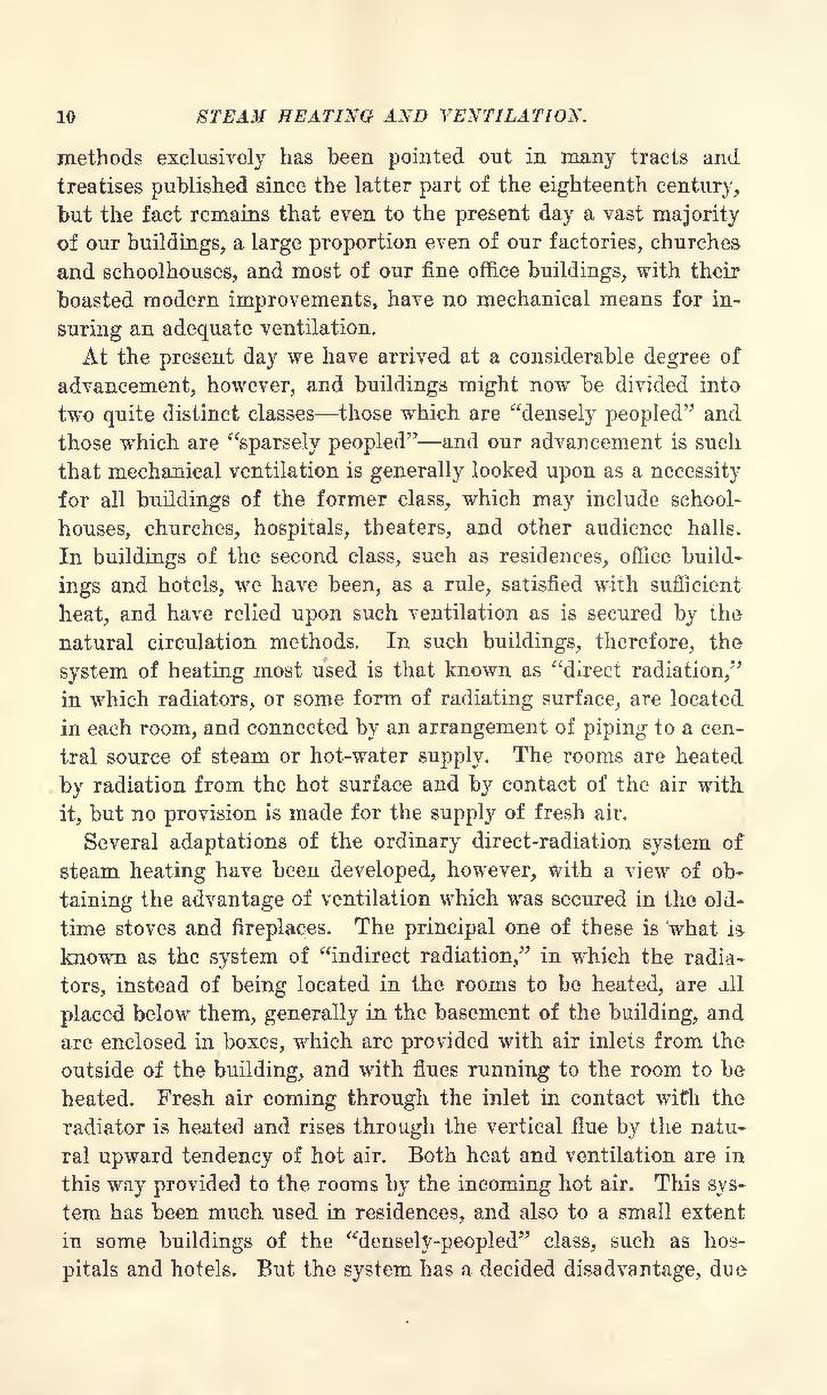methods exclusively has been pointed out in many tracts and treatises published since the latter part of the eighteenth century, but the fact remains that even to the present day a vast majority of our buildings, a large proportion even of our factories, churches and schoolhouses, and most of our fine office buildings, with their boasted modern improvements, have no mechanical means for insuring an adequate ventilation.
At the present day we have arrived at a considerable degree of advancement, however, and buildings might now be divided into two quite distinct classes those which are "densely peopled" and those which are "sparsely peopled" and our advancement is such that mechanical ventilation is generally looked upon as a necessity for all buildings of the former class, which may include schoolhouses, churches, hospitals, theaters, and other audience halls. In buildings of the second class, such as residences, office buildings and hotels, we have been, as a rule, satisfied with sufficient heat, and have relied upon such ventilation as is secured by the natural circulation methods. In such buildings, therefore, the system of heating most used is that known as "direct radiation," in which radiators, or some form of radiating surface, are located in each room, and connected by an arrangement of piping to a central source of steam or hot-water supply. The rooms are heated by radiation from the hot surface and by contact of the air with it, but no provision is made for the supply of fresh air.
Several adaptations of the ordinary direct-radiation system of steam heating have been developed, however, with a view of obtaining the advantage of ventilation which was secured in the old-time stoves and fireplaces. The principal one of these is what is known as the system of "indirect radiation," in which the radiators, instead of being located in the rooms to be heated, are all placed below them, generally in the basement of the building, and are enclosed in boxes, which are provided with air inlets from the outside of the building, and with flues running to the room to be heated. Fresh air coming through the inlet in contact with the radiator is heated and rises through the vertical flue by the natural upward tendency of hot air. Both heat and ventilation are in this way provided to the rooms by the incoming hot air. This system has been much used in residences, and also to a small extent in some buildings of the "densely-peopled" class, such as hospitals and hotels. But the system has a decided disadvantage, due
